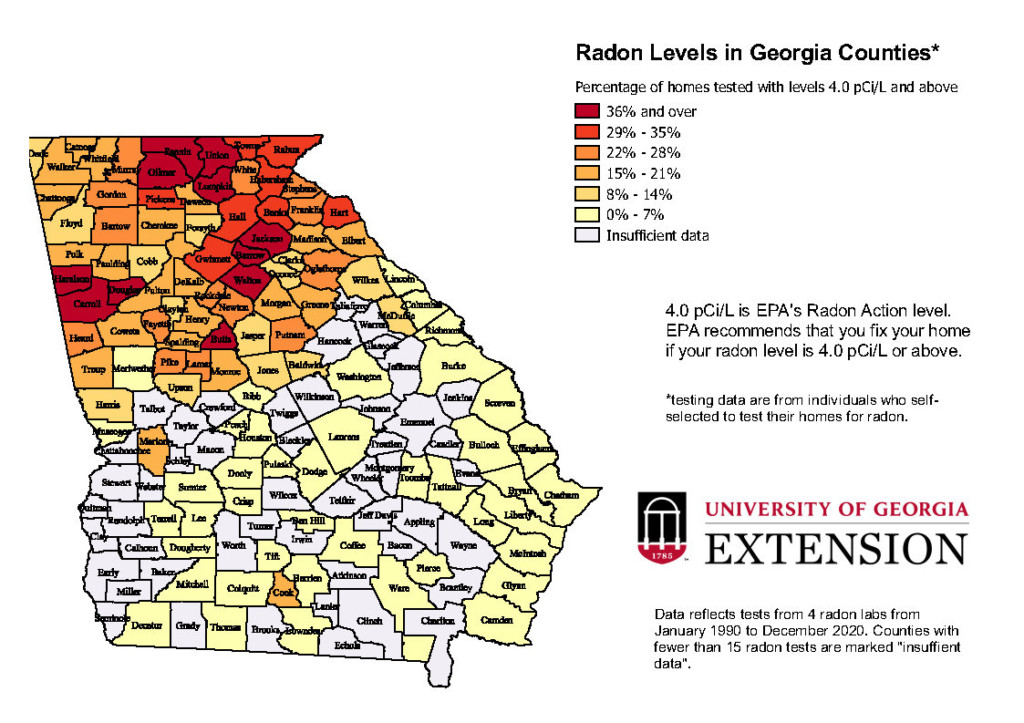Radon is an odorless gas that seeps out of soil and rock and into the air. It is formed when uranium that is found in soil and rock, breaks down, emitting radon gas. While radon is not dangerous outdoors, if it emerges under a home it can seep in and reach dangerous concentrations. The only way to detect radon is to test for it.
Exposing yourself and your family to a high level of radon over several years increases the risk of developing lung cancer. According to the Environmental Protection Agency (EPA), radon is the second leading cause of lung cancer behind smoking.
About one in fifteen homes have an elevated level of radon (4 picocuries per liter or greater). In much of Georgia, homes are much more likely to have elevated levels of radon when compared to the national average. Granite rock found in the soil beneath our homes elevates the risk for radon intrusion.
To help you identify the risk of radon in your county, the University of Georgia Radon Program recently updated its radon map. Visit radon.uga.edu to view an interactive map of radon risk throughout the state. In some Georgia counties, one in two homes tested has an elevated level of radon. In most of the counties north of Columbus, Macon and Augusta, the risk of having an elevated level of radon in your home is significantly above the national average.

Regardless of where your home is or how it is built, we recommend testing for radon gas. Testing for radon gas is inexpensive and ensures your home remains radon safe. You can order a radon test kit from UGA Extension (radon.uga.edu) for $15. The kit is hung in the lowest livable level of your home for 3 to 7 days then mailed off for analysis. If the test results are above 4 picocuries per liter, you can either test again or consult a radon professional about installing a radon mitigation system to fix the problem. What about radon in well water? If your drinking water comes from a well or other underground source, then it could contain radon. If you have a private well, we recommend testing your air first and if that result is high, then test your drinking water.